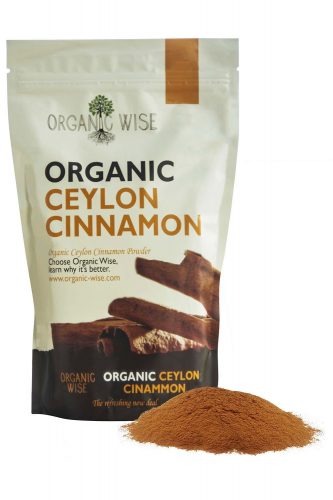We’re women; which means for most of us periods are or were a reality. A few of us are lucky. “Aunt Flo” comes into town, doesn’t cause much ruckus, is a polite guest and leaves in a timely manner. However, some of us have or have had a very poor relationship with “Aunt Flo” and as we get older, the relationship seems to increasingly go down the tubes. I’ve been in both of those scenarios and that’s why I began to search for remedies to my problems that didn’t involve a scalpel or more hormones. The following 5.5 (I’ll explain that 0.5 in a bit) supplements have proven to be lifesavers in my mid-late 30s menstrual journey.

Disclaimers:
I’m not a doctor and you should always consult your healthcare professional for anything concerning your health and wellness.
I do not have PCOS nor endometriosis. I have a history of fibroids that I got surgically removed in 2010. To date, I have 3 “tiny” (my doctor’s words) re-growths.
I generally have a “regular” cycle of 26-27 days that comes like clockwork.
I’m athletic, of average weight, and in good health with no pre-existing conditions.

Yarrow is a flower that is known for its ability to either slow down excessive blood flow or assist in stagnant blood flow. It’s also used for a number of female reproductive issues. I first tried yarrow when I test drove another supplement that was supposed to ease the problems that come with fibroids. Within 6 hours, I was bleeding as if all the blood in my body was being summoned out of me by a malevolent force. It was bad. I could not leave the house. Since that had never happened to me before, I knew it had to be those pills (called Fibro Blend, BTW). I searched high and low to find something to stop the bleeding because although I didn’t take a third does of the pills, the bleeding didn’t seem to be any closer to stopping. I find Yarrow on Google and looked at reviews of it on Amazon. It sounded promising so I used my Prime same-day delivery to order them. I took 2 pills every two hours for 6 hours (3 doses), and by that evening, it was as if the previous days of the apparent blood sacrifice between my legs never happened. Not only did the bleeding slow down, after my first dose the next day, but the bleeding had also stopped; as in white pants stopped. Nothing.
You can find Yarrow in a tincture, tea or pills. I bought and used Nature’s Way 325mg from Amazon, however, these pills are sold at most health food stores. More info can be found here.

After Yarrow straightened out the issue brought on by my experimentation, things pretty much went back to normal for the next cycle. Unfortunately for me, “normal” includes a day 2 from hell. After I hit my mid-30s, day 2 became an absolute nightmare and basically made me start to take the paid menstrual leave movement seriously. This time around, I tried Nettle. I drank the tea, two tea bags per cup, starting the day before I was due to get my period (tracking is important). By the time day 2 came around, it wasn’t nearly the nightmare it had been. I was actually able to leave the house and attend a funeral, graveyard service, and after service dinner (about 5 hours out of my day) with confidence and without having to run to the restroom to replenish every 90 minutes.
I have to back up here and say that Nettle is known for detox in general. If you’ve ever used any of the detox teas from Yogi or any of the herbal tea brands, you’ll notice Nettle often makes the list.
Did Nettle dry me up like Yarrow? No. I still had a regular-length period (5 days for me), but it made day 2 a lot less cumbersome.

Hold on to your hats because the beginning of this is going to be a little nerdy. We are all exposed to xenoestrogens. Xenoestrogens are the chemicals in things like plastic that enter our bloodstream when we consume our food and drink out of them. Since we are women, we already have estrogen. Xenoestrogens mimic the estrogen we already have. Estrogen is one of those things that needs to be balanced for the body to function optimally. Since we’re getting extra doses of estrogen, we start to be out of balance. Many conditions like PCOS, fibroids, endometriosis, and certain estrogen-linked cancers (ie. breast) and even lupus, have been linked to estrogen dominance. It is also alleged that estrogen dominance is why girls of color, particularly Black girls, tend to enter puberty quite early.
DIM stands for Diindolylmethane. It aids estrogen metabolism. You can find DIM in cruciferous vegetables (ie. broccoli, cauliflower, cabbage, etc) however, most of us aren’t going to eat enough of these vegetables to get the job done (I, for one, won’t be eating any of them). DIM allows estrogen to break down into good metabolites. DIM also keeps testosterone from converting into estrogen (ie. the case of “mitties” in men). While good estrogens are protective against breast cancer, the bad ones do damage. DIM has also been found useful against hormonal acne.
Long story short, DIM is good for the detoxification of harmful estrogens through the liver. Calcium d-Glucarate, commonly taken with DIM, helps move those estrogens out of the body (which is why you may experience more bowel activity when you start taking these two). This prevents those detoxified estrogens from just recirculating in your body instead of exiting your body.
It’s suggested that women who are showing signs of estrogen dominance take it. What are signs of estrogen dominance? Heavy periods, long periods, short periods (shorter than 25 days), and major PMS symptoms.
DIM is also believed to be helpful for women who are menopausal in terms of maintaining their weight.
I started taking DIM when I started experiencing the symptoms of PMDD. At some point, I don’t remember when, my PMS became really unbearable. I’d cry and cry for absolutely no reason and even though I watch what I eat and I know we get cravings around our period, I was eating uncontrollably the few days leading up to my period and my Type-A personality then had me exercising like a maniac (doing burpees for 30 minutes at 2 am on a Tuesday) to make up for it.
DIM keeps me steady and the Calcium d-Glucarate keeps me regular. I’m no longer a ravenous raving lunatic (until I have to drive in Dallas traffic) leading up to my period. I’m also experiencing fewer clots.
I take one DIM (250mg) and one Calcium d-Glucarate (500mg) per day.
***Note: DIM will cause your urine to turn orange. Not to worry.

This is by far the mother of all period remedies. I bought this specifically to write this article. I read that if Nettle didn’t work, Shepherd’s Purse would. I bought the tincture on Amazon. The dosage is 15-30 drops in water three times/day. I started this on day 1 of my period. On day 2, I read that in the beginning, it’s okay to take 2ml under the tongue every hour. So, the late morning of day 2, I started doing that. By the end of day 3 (yesterday), there was no more blood. None. Today is day 4. I’ve gone all day without a drop. If you have fibroids, endometriosis, or are peri-menopausal and experiencing waterfall bleeding and Nettle or Yarrow didn’t work for you, I think this may be your answer.

https://www.ncbi.nlm.nih.gov/pmc/articles/PMC4443385/
I was thought this was more folk remedy than anything but I tried it and it worked. I got some organic ceylon cinnamon from my local health food store and put 1 teaspoon in a cup of boiled water. After it cooled enough to drink it, I gulped it down. Although it’s not the best thing you’ll ever taste, it did work to lighten my flow for about two hours. Then, I switched back to the Nettle. Theoretically, cinnamon causes blood to flow AWAY from the pelvis to the extremities and slows down bleeding.
BTW, the cinnamon you usually buy for cooking purposes or in pill form is likely Cassia cinnamon. I have no information on whether or not it functions the same.
Though I still pray for early menopause every single day, these remedies have helped me avoid the terrible side effects of hormonal birth control and kept me from other invasive procedures. Everyone is different but if you’re at the end of your rope, one of these might help.